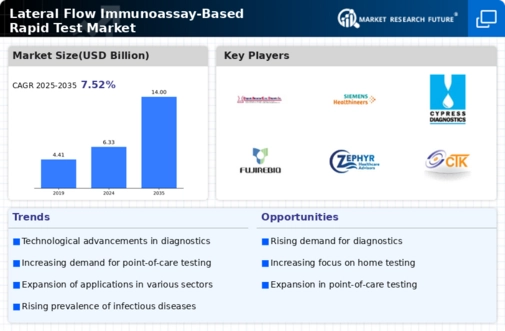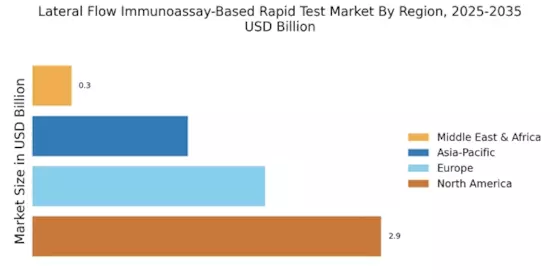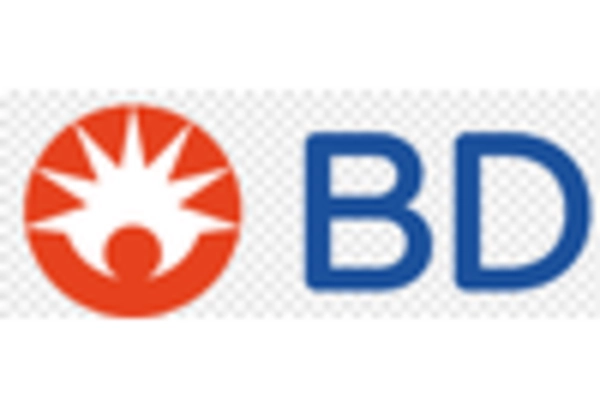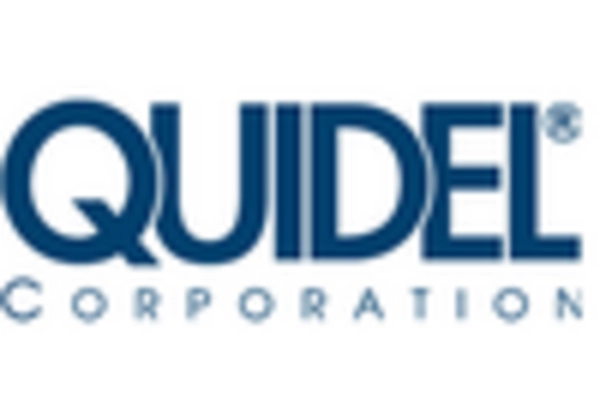Rising Incidence of Infectious Diseases
The Lateral Flow Immunoassay-Based Rapid Test Market is significantly influenced by the rising incidence of infectious diseases. The increasing prevalence of conditions such as influenza, hepatitis, and sexually transmitted infections necessitates rapid and accurate diagnostic tools. Lateral flow tests offer a practical solution for timely detection, which is critical in controlling outbreaks. Market analysis indicates that the infectious disease testing segment is projected to grow substantially, potentially reaching a valuation of several billion dollars by 2027. This growing need for rapid testing solutions is likely to propel the lateral flow immunoassay market forward, as healthcare providers seek efficient ways to manage public health.
Growing Demand for Point-of-Care Testing
The Lateral Flow Immunoassay-Based Rapid Test Market is witnessing a notable increase in demand for point-of-care testing solutions. This trend is largely attributed to the need for rapid diagnosis in various healthcare settings, including clinics and home care. The convenience and speed of lateral flow tests allow for immediate decision-making, which is crucial in managing patient care. Market data indicates that the point-of-care testing segment is expected to account for a significant share of the overall market, with projections suggesting it could reach over 50% by 2026. This shift towards decentralized testing is likely to drive further innovation and investment in the lateral flow immunoassay sector.
Increased Focus on Preventive Healthcare
The Lateral Flow Immunoassay-Based Rapid Test Market is benefiting from a heightened emphasis on preventive healthcare measures. As healthcare systems worldwide shift towards proactive health management, the demand for rapid testing solutions is escalating. Lateral flow tests facilitate early detection of diseases, which is essential for effective preventive strategies. This trend is reflected in market forecasts, which suggest that the preventive healthcare segment will see substantial growth, potentially exceeding 30% of the total market by 2025. The ability of these tests to provide quick results empowers individuals to take charge of their health, thereby driving the adoption of lateral flow immunoassays.
Expansion of Applications in Various Sectors
The Lateral Flow Immunoassay-Based Rapid Test Market is expanding its applications across diverse sectors beyond traditional healthcare. Industries such as food safety, environmental monitoring, and veterinary diagnostics are increasingly adopting lateral flow tests for their rapid and reliable results. This diversification is indicative of the versatility of lateral flow immunoassays, which can be tailored to meet specific testing requirements. Market trends suggest that the food safety testing segment alone could witness a growth rate of over 10% in the coming years. As more sectors recognize the benefits of rapid testing, the lateral flow immunoassay market is likely to see a significant increase in demand and innovation.
Technological Advancements in Lateral Flow Immunoassay-Based Rapid Test Market
The Lateral Flow Immunoassay-Based Rapid Test Market is experiencing a surge in technological advancements. Innovations in assay design and materials are enhancing the sensitivity and specificity of tests. For instance, the integration of nanotechnology is enabling the development of more efficient and rapid tests. The market is projected to grow at a compound annual growth rate of approximately 8% over the next few years, driven by these advancements. Furthermore, the introduction of digital platforms for data analysis and result interpretation is streamlining the testing process, making it more user-friendly. This evolution in technology not only improves the accuracy of results but also expands the range of applications for lateral flow tests, thereby broadening the market's potential.


















Leave a Comment